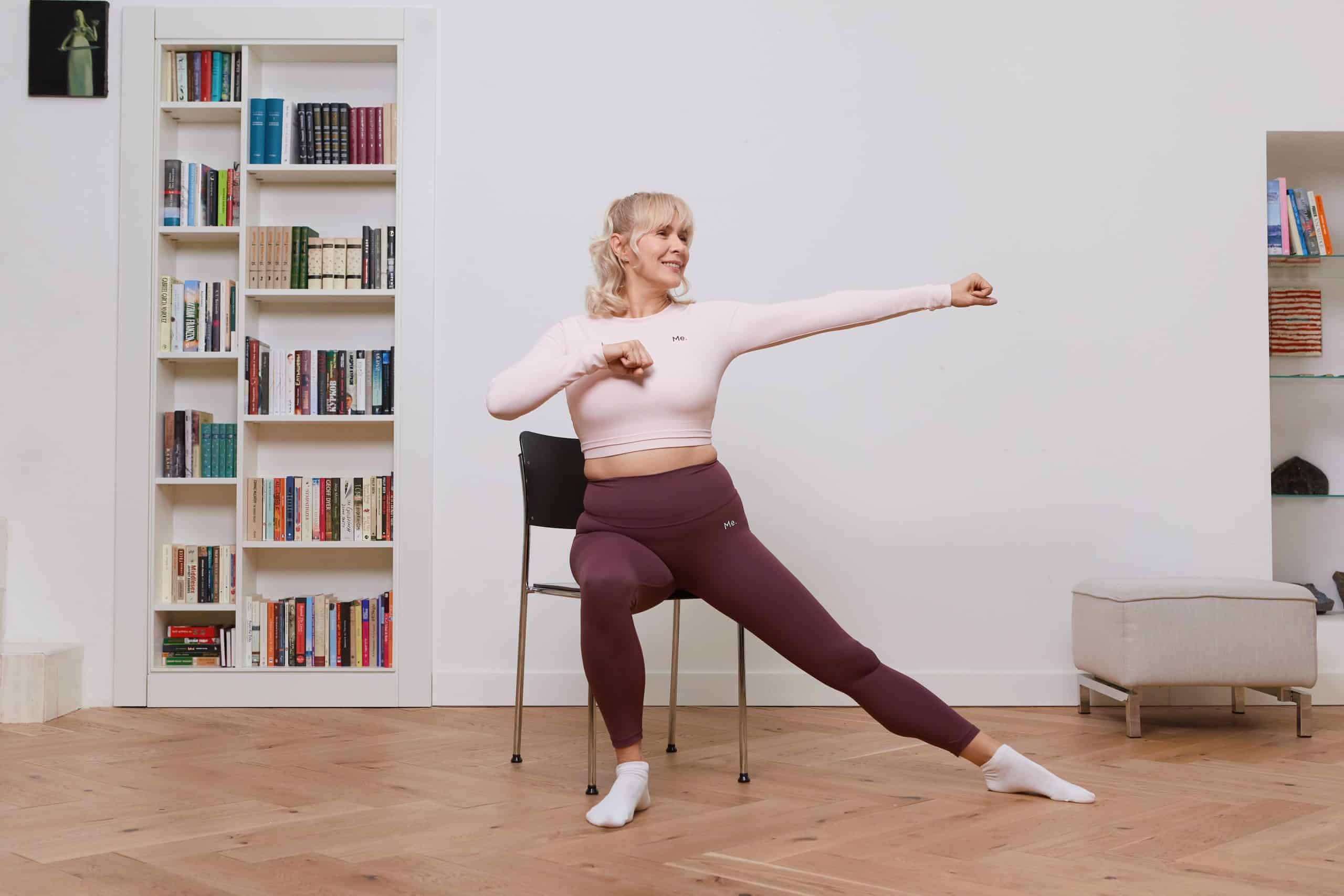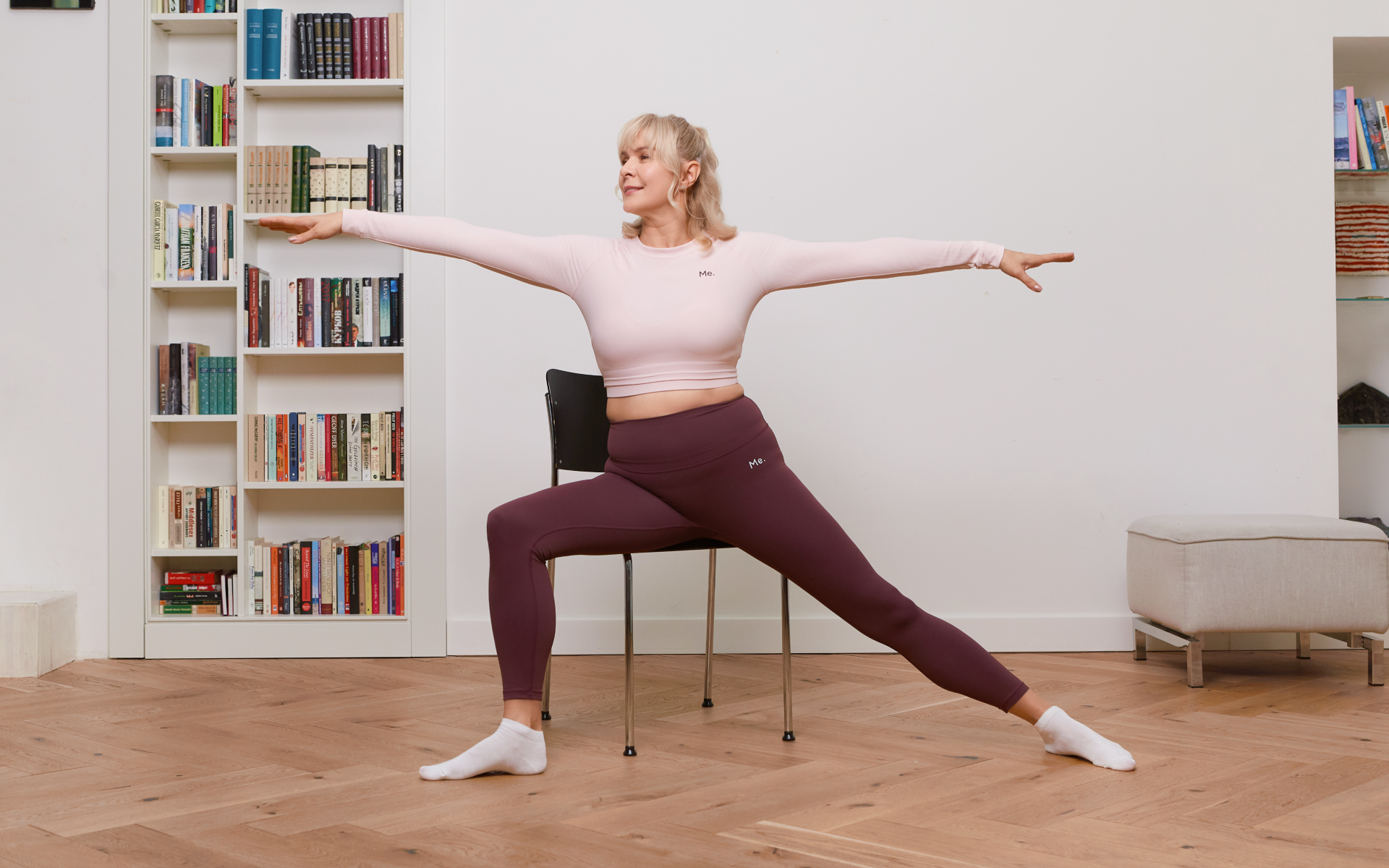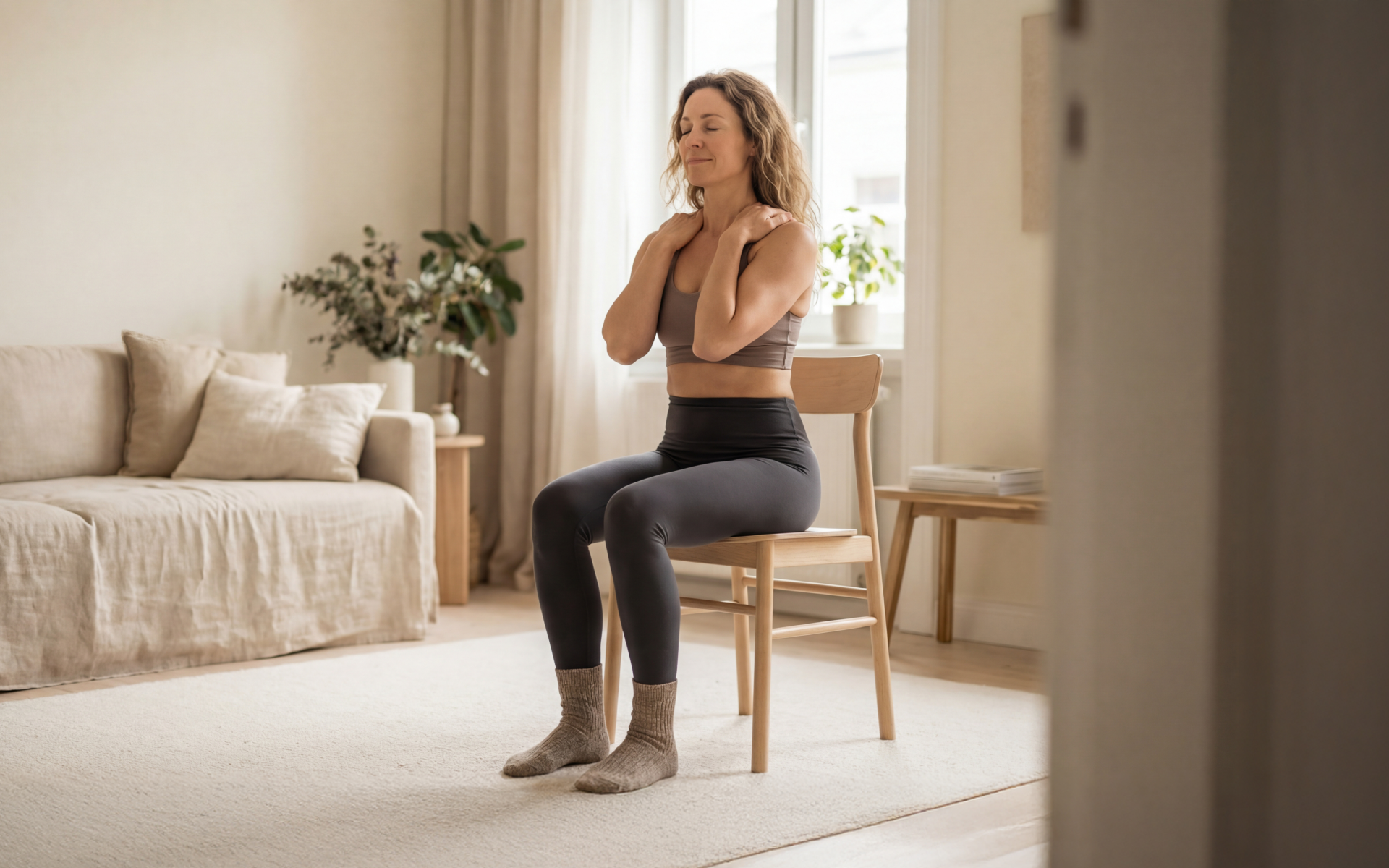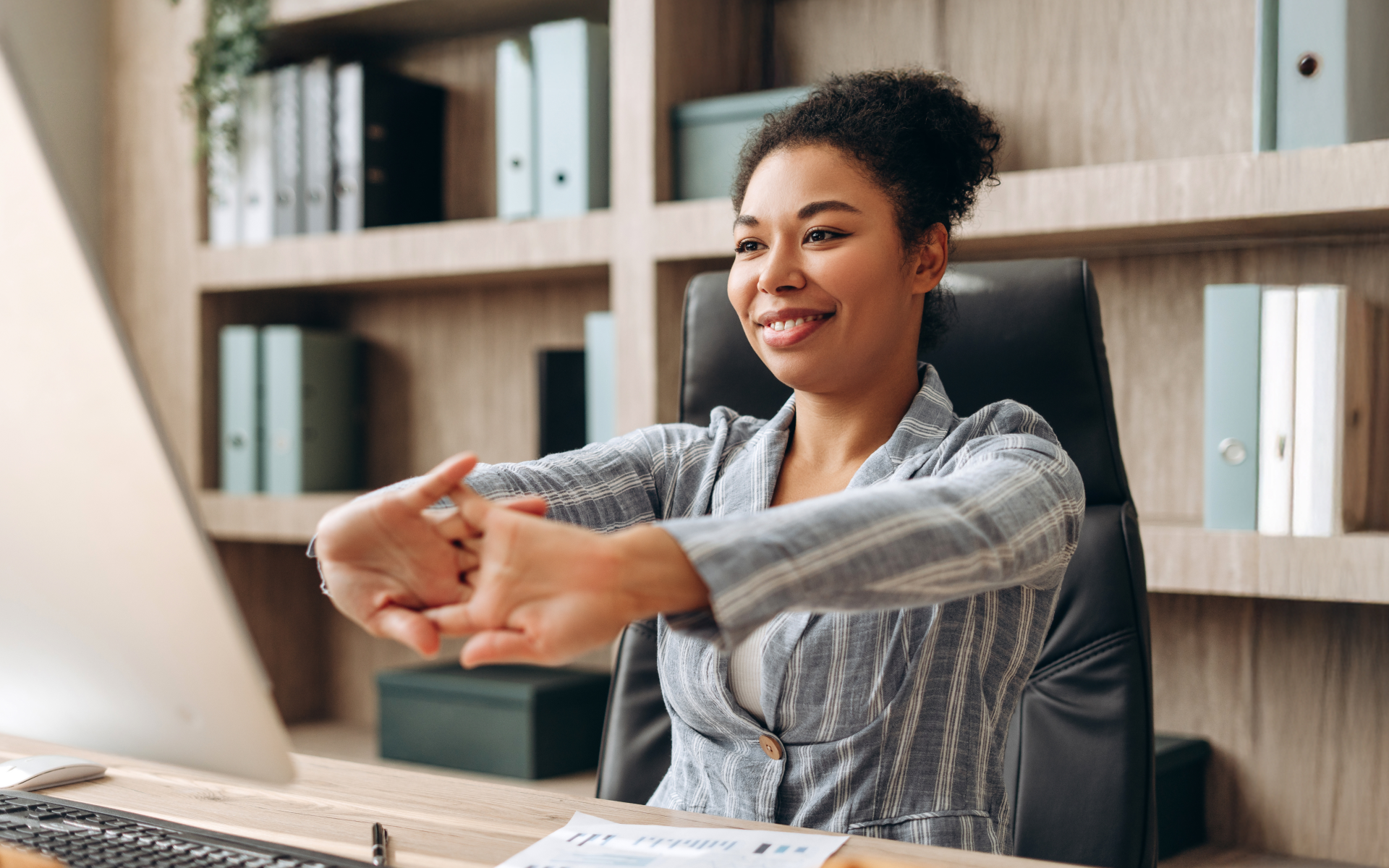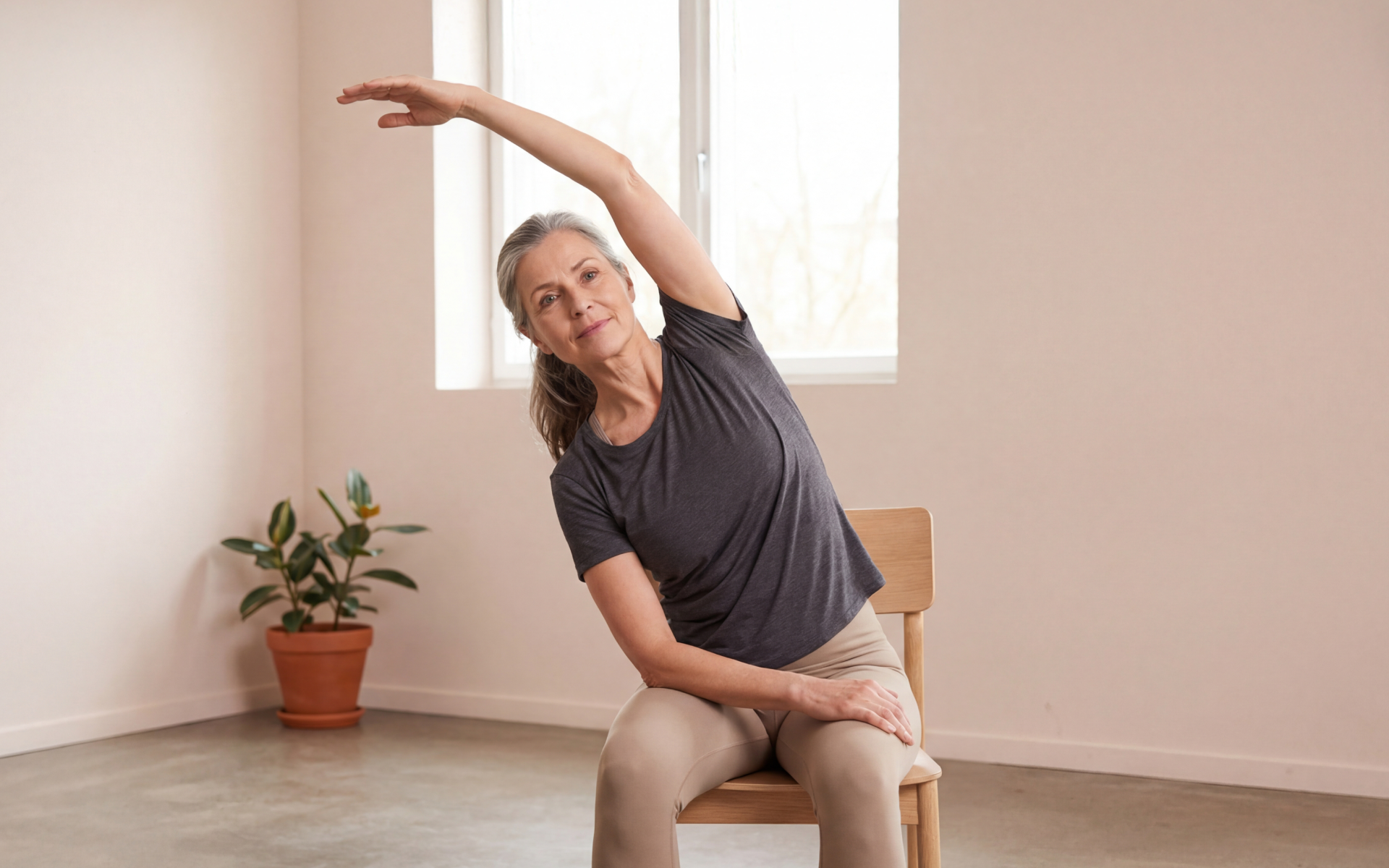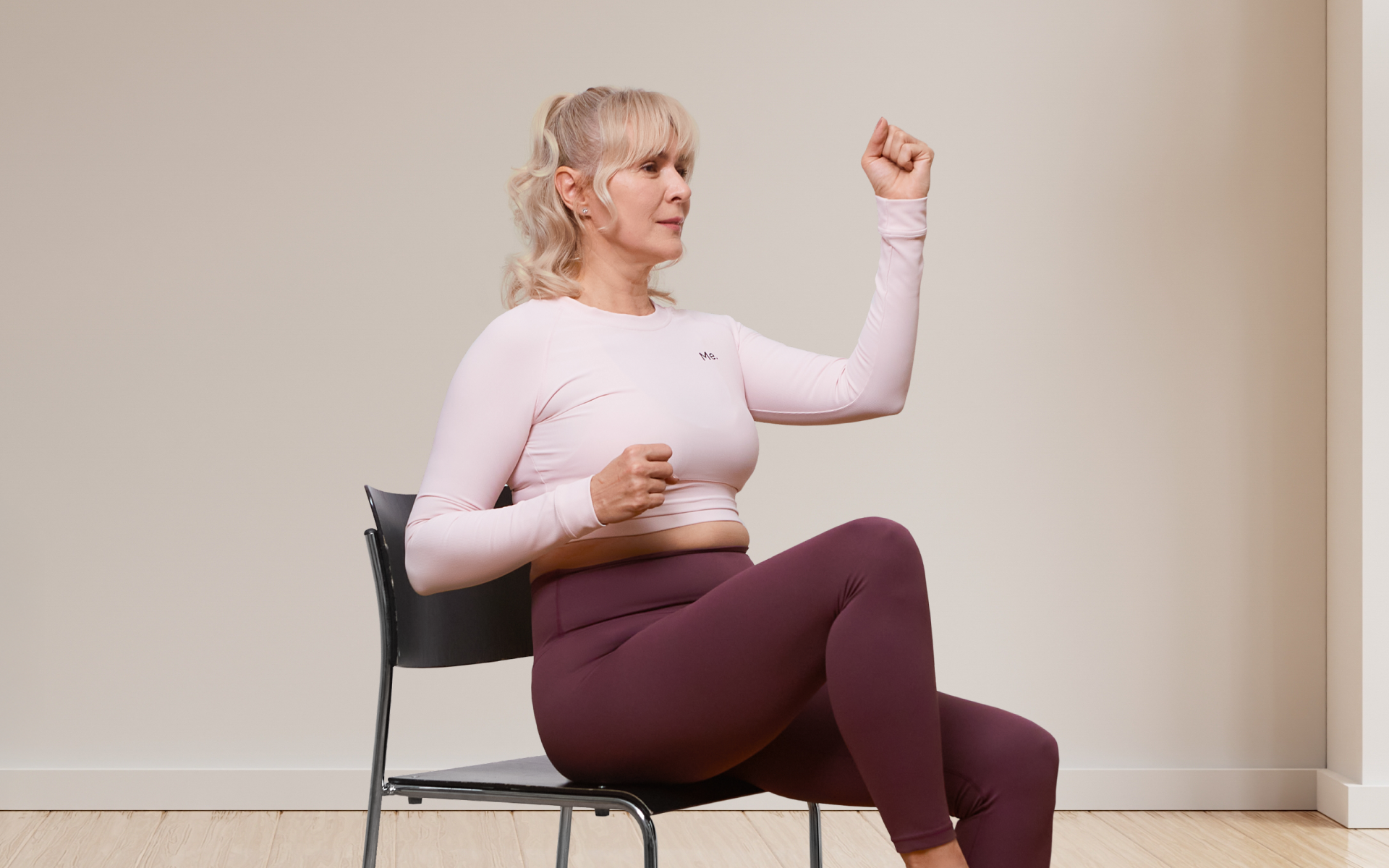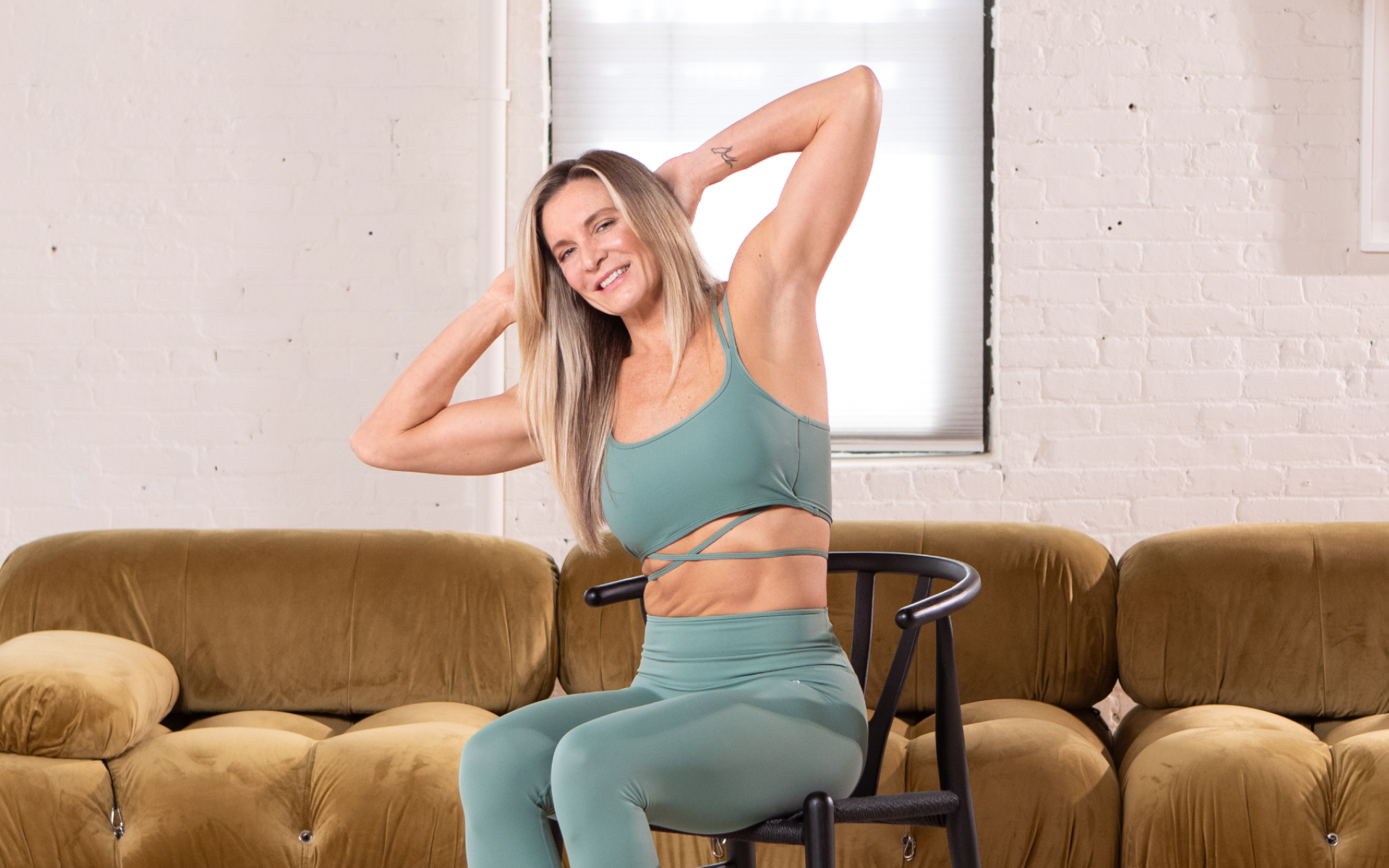Exercise is often touted for its superb perks on human health. Regardless of age, moving your body in a particular pattern can bring loads of benefits such as improved fitness, better mental health, and a whole lot of confidence. These are particularly integral for those in adulthood as they are experiencing a gradual decline in their fitness capabilities (1).
Seniors who indulge in regular physical activities may find themselves in a better state than those who don’t. It can reduce the risk of chronic diseases, preserve their functional capacities, increase their life expectancy, and help them perform daily activities such as driving and cooking without relying on others. The American College of Sports Medicine says that exercise is good for all older adults, whether they’re already active and healthy or have health problems (2). The important thing is to make an exercise plan that fits each person’s fitness level.
It’s quite likely that adults realize the importance of exercise at a point where they can’t move freely due to physical impairments or injuries. Seated chair exercises for seniors offer a fairly accessible solution for such individuals. They may experience improved strength, balance, and mobility with consistent routine and correct positions. This article delves into some well-known seated chair exercises for seniors, followed by the recommended frequency and tips to make them effective in your favor.
Keep reading to uncover some interesting facts!
How Can I Flatten My Stomach Sitting in a Chair?
You can hit all your core muscles without getting up from your seat. You don’t need any fancy tools to perform chair exercises that target your stomach. All you need is space to set up your chair and the ability to adjust your body. Below, we’ve shared some effective seated exercises that could help you get a flatter belly. Before you learn those, you should note the following points:
- Remember to keep your tummy muscles tight and your shoulders loose while performing these exercises. Breathe normally throughout.
- Changing your position can make some of these exercises easier or harder.
- Always aim to stay in a pain-free motion range instead of pushing through discomfort.
- Try doing each exercise 10 to 15 times or for 20 to 30 seconds. If it gets too easy, do it more times or for longer.
- Also remember that your daily food intake will arguably be the most important factor in obtaining a flattened stomach. Exercise on its own is unlikely to see meaningful results unless paired with appropriate eating habits.
Once you’ve arranged a sturdy chair, you can get started with these moves.
Seated Chair Exercises for Seniors: Forward Crunch
This move targets your rectus abdominis, which is often called the six-pack (3). You should skip this exercise if bending your spine causes discomfort. Here are the steps to perform this exercise:
- Sit straight on the edge of your chair with your knees bent and feet on the floor. Put your hands across your chest.
- Squeeze your tummy muscles and lean forward, curling your back and bringing your chest toward your knees.
- While breathing out through your stomach, try to lean as far forward as possible, then while breathing in through your chest, try to sit up straight again. Do this 10 to 15 times or for 20 to 30 seconds.
Lean and toned up body isn’t just a far-fetched fantasy. Check out the BetterMe app and watch it propel your weight loss journey into high gear!
Seated Backward Crunch
In this exercise, you must use your core muscles to lean backward while keeping a straight back. This is an excellent alternative for those who feel uncomfortable doing forward crunches. The steps to perform this exercise are:
- Sit straight on the edge of your chair with your knees bent and your feet on the floor.
- Squeeze your tummy muscles and lean back, keeping your body straight. You can cross your arms over your chest to make it easier or put them over your head to make it harder.
- Lean back as far as you can, then sit up straight again. Do this 10 to 15 times or for 20 to 30 seconds.
Chair Boat Pose
This pose can strengthen your core and improve your balance (4). It primarily targets the rectus abdominis and hip flexors. You can perform this exercise by following these steps:
- Sit sideways on the edge of your chair.
- Lean back a little, lifting both legs off the floor until they’re at a 45-degree angle.
- Stretch your arms out to the sides, in line with the floor.
- Keep your back straight and your tummy muscles tight.
- Hold this pose and focus on your breathing for 15 seconds. Ideally, you’ll want to breathe in through your chest and out through your stomach. Every breath out should help pull your belly button further into your stomach. This will work to tighten the core even further.
- Lower your legs and rest.
- Repeat this process 3 times.
Seated Chair Exercises for Seniors: Oblique Twist
Your obliques are the muscles on your sides that allow you to twist and bend from one side to another (5). An oblique twist is quite a simple exercise you can perform to train your obliques. This exercise requires twisting in the seat, which may cause discomfort for those with lower-back pain, so please be cautious before you attempt this one. Refrain from adding additional weight until you’ve perfected this movement. The steps to perform this are as follows:
- Sit on the edge of your chair with your knees bent and your feet on the floor. Put your hands behind your head to make it more difficult or across your chest to make it easier.
- Squeeze your tummy muscles and slowly turn your chest to one side.
- Turn your chest back to the middle, then turn to the other side.
- If you want to make it harder, lean back and hold your arms straight in front of you.
- Do this 10 to 15 times on each side or for 20 to 30 seconds.
Chair Eagle Pose
This exercise aims to reduce tension in the hips and shoulders while keeping your core engaged, particularly the obliques (6). You can make this pose by following these steps:
- Sit on the chair with your feet flat on the ground.
- Cross your right thigh over your left thigh, and try to hook your right foot around the back of your left calf.
- Cross your right arm over your left arm, bending at the elbows, and try to touch your palms together.
- Hold this twisted position and breathe deeply.
- Release and switch sides, crossing your left thigh over your right and your left arm over your right.
- Repeat this process 5 to 10 times.
Chair exercises for belly fat may not be the only key to losing weight or preparing you for an advanced yoga routine. However, they can help you have better strength and stamina (7). Constantly performing these exercises could make you better at activities such as walking short distances, loading laundry in the dryer, or carrying a pot of water from the sink to the stove.
Read More: How To Do Chair Yoga: Tips For Every Beginner
According to physical therapist Tobi Jevnikar, everyone of every age and ability can benefit from exercise (8). Chair-based exercises are modifications that can help you exercise safely. She suggests performing exercises that work all the muscles in your body, not only some of them. Therefore, your chair exercise plan should include exercises for your arms, legs, core, and other important muscle groups.
What Exercises Can I Do While Sitting in a Chair?
Staying active doesn’t mean you need to join a gym or go for a run. Even sitting in a chair, you can engage in various exercises that offer numerous benefits. If you’ve limited mobility or are recovering from an injury, you can opt for low-impact workouts such as yoga chair exercises for seniors. These exercises can help improve your strength and help you remain active, even when your overall fitness and health start ticking backward.
Seated Chair Exercises for Seniors: Leg Extensions
Target Muscle Group: Legs
- Sit on your chair with your feet on the floor, approximately as far apart as your hips.
- Move your bottom forward on the chair.
- Keep your back straight and your shoulders back.
- Slowly lift one leg until it’s as close to a straight line as possible.
- Hold it there for a moment, then lower your leg back down.
- Do this 10 times on one leg, then switch to the other.
Whether you’re looking to simply pep up your fitness routine, jazz up your diet with mouth-watering low-calorie recipes or want to get your act together and significantly drop that number on your scale – BetterMe app has got you covered! Improve your body and revamp your life with us!
Seated Marches
Target Muscle Group: Hips and thighs
- Sit up straight near the front of your chair. Keep your feet hip-width apart and arms at your sides.
- Tighten your tummy muscles.
- Lift your right leg as high as possible, keeping your knee bent.
- Slowly lower your right foot back down to the floor.
- Repeat the same movement with your left leg. This is one full exercise.
- Do two or three sets of 10 to 12 exercises.
Seated Jumping Jacks
Target Muscle Group: Core, shoulder, and legs
- Sit up straight near the front of your chair. Keep your arms at your sides and your feet together.
- Tighten your tummy muscles.
- Swing your arms over your head while stepping out to the sides, approximately shoulder-width apart.
- Bring your arms back to your sides and step your feet back together to return to the starting position.
- Do this exercise 10 to 12 times as fast as you can.
- Repeat the whole set of movements two or three times.
Seated Torso Twists
Target Muscle Group: Core and obliques
- Sit straight with your feet flat on the floor, hip-width apart. Don’t lean back against the chair.
- Put your hands lightly behind your head with your elbows bent and pointing to the sides.
- Without moving your hips, breathe out and twist your body to the right as far as you comfortably can.
- Breathe in and turn back to the center, keeping your hips still.
- Breathe out and twist your body to the left as far as you comfortably can.
- Breathe in and turn back to the center.
- Keep twisting to each side 6 to 8 times. Rest briefly and then perform another set.
Modified Burpees
Target Muscle Group: Chest, shoulders, and triceps
- Put a strong chair against the wall so it won’t move.
- Stand facing the chair with your feet approximately shoulder-width apart.
- Bend your knees and push your hips back as if going to sit down.
- Place both hands on the chair seat, arms straight out, with your palms under your shoulders.
- Step one foot back, then the other, so your body makes a straight line from head to heels.
- Step your feet back up to the starting position.
Straighten your legs and push through your feet to stand up, lifting your arms over your head and clapping your hands together.
Seated chair exercises are the new accessible way to get into the fitness world. They make it pretty evident that you can tread toward fitness at any point in life. Whether you’re a newbie in the fitness world or someone who’s been working out all your life, you can add them to your exercise regime to spice it up. Once you feel that you’re good enough at these exercises, you could potentially proceed to advanced workouts that don’t rely on a chair.
Read More: Chair Yoga Sequence For Seniors: How This Program Benefits Older Adults
How Often Should a Senior Do Chair Exercises?
Workouts don’t need to be an hour long to be effective for building strong and defined muscles. The central purpose is to keep your body functional and activate the muscles that aren’t used often. The Centers for Disease Control (CDC) recommends seniors exercise for 150 minutes per week (9). It suggests that people 65 or older should perform 150 minutes of moderate exercise and 2 days of muscle-strengthening activities.
It’s only when you do them with consistency that you can witness benefits such as(10):
- Improved bone health
- Reduced risk of dementia
- Reduced depression episodes
- Better overall quality of life
One review found that resistance exercise, such as lifting weights, can be the most effective way for older people to improve their muscle and bone strength (11). This is particularly true for middle-aged men and women who’ve gone through menopause.
Another study showed that exercise can be a helpful tool for older adults who are dealing with depression (12). The study found combining exercise with medication to be more effective than using medication alone for older adults who are inactive and experiencing major depression.
Simply doing 10-minute chair exercises for seniors can work wonders in their favor. The only rules are to be consistent, follow proper instructions, and balance other lifestyle aspects to reap the most rewards.
FAQs
Do chair exercises really work?
Yes, chair exercises can be quite effective for individuals who are struggling with limited mobility due to aging or injuries. They help improve flexibility, balance, strength, and circulation.
Can you lose weight doing chair yoga for seniors?
Yes, chair yoga for seniors can help with weight loss. It burns calories, enhances flexibility, and builds muscle strength, all of which contribute to weight loss when paired with a healthy diet.
What is the best time of day for seniors to exercise?
The best time of day for seniors to exercise is typically in the morning. Morning exercise can boost energy levels, improve mood, and help establish a consistent routine. However, the ideal time can vary according to individual preferences and routines. It’s all about staying consistent, so find a time of day that works for you and make it happen!
How can seniors strengthen their legs while sitting?
Seniors can strengthen their legs while sitting by performing specific exercises such as seated leg lifts, ankle pumps, seated marches, and seated knee extensions.
Summary
Seated chair exercises for seniors are perfect for those who are experiencing a gradual decline in their physical and mental abilities. Starting with low-impact moves, they can gradually adopt more advanced techniques. Unlike traditional exercises, there are fewer risks of injuries, losing balance, or pulling muscles. You may find yourself doing better, in terms of physical and mental health, through the regular and persistent performance of chair exercises regularly. Although it’s recommended to spend about 150 minutes a week doing these exercises, you should talk to your doctor before you start a plan.
DISCLAIMER:
This article is intended for general informational purposes only and does not serve to address individual circumstances. It is not a substitute for professional advice or help and should not be relied on for making any kind of decision-making. Any action taken as a direct or indirect result of the information in this article is entirely at your own risk and is your sole responsibility.
BetterMe, its content staff, and its medical advisors accept no responsibility for inaccuracies, errors, misstatements, inconsistencies, or omissions and specifically disclaim any liability, loss or risk, personal, professional or otherwise, which may be incurred as a consequence, directly or indirectly, of the use and/or application of any content.
You should always seek the advice of your physician or other qualified health provider with any questions you may have regarding a medical condition or your specific situation. Never disregard professional medical advice or delay seeking it because of BetterMe content. If you suspect or think you may have a medical emergency, call your doctor.
SOURCES:
- Emerging Adulthood, a Pre-adult Life-History Stage (2020, ncbi.nlm.nih.gov)
- American College of Sports Medicine position stand. Exercise and physical activity for older adults (2009, pubmed.ncbi.nlm.nih.gov)
- Abdominal Muscles (n.d., physio-pedia.com)
- Effect of Chair Yoga Therapy on Functional Fitness and Daily Life Activities among Older Female Adults with Knee Osteoarthritis in Taiwan: A Quasi-Experimental Study (2023, ncbi.nlm.nih.gov)
- Oblique External Abdominal Muscle (2020, sciencedirect.com)
- Āsana for Back, Hips and Legs to Prevent Musculoskeletal Disorders among Dental Professionals: In-Office Yóga Protocol (2024, ncbi.nlm.nih.gov)
- Yoga for weight loss: Benefits beyond burning calories (2021, health.harvard.edu)
- 11 Chair Exercises for Seniors, Older Adults and People With Limited Mobility (2024, health.clevelandclinic.org)
- Physical Activity for Older Adults: An Overview (2023, cdc.gov)
- Physical Activity Guidelines for Americans (2019, health.gov)
- Effects of Resistance Exercise on Bone Health (2018, ncbi.nlm.nih.gov)
- Physical exercise for late-life major depression (2018, cambridge.org)
